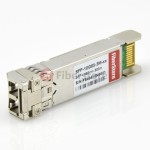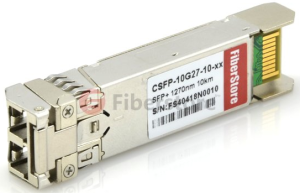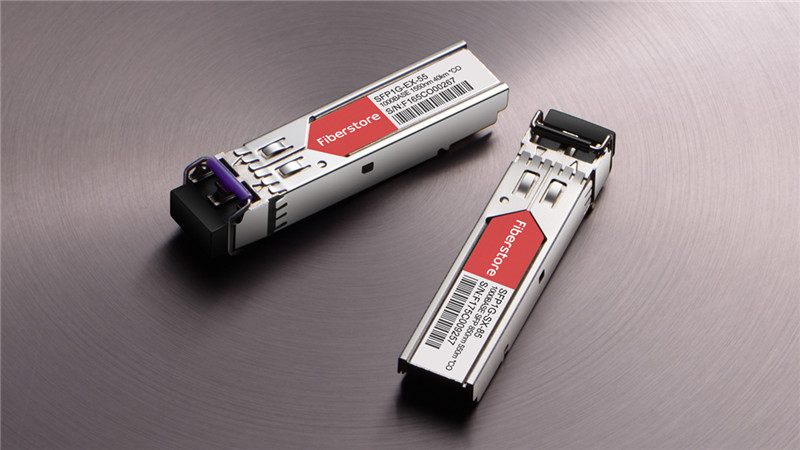CWDM systems have channels at wavelengths spaced 20 nanometers (nm) apart, compared with 0.4 nm spacing for DWDM. This allows the use of low-cost, uncooled lasers for CWDM. In a typical CWDM system, laser emissions occur on full eighteen channels at eighteen defined wavelengths: 1610 nm, 1590 nm, 1570 nm, 1550 nm, 1530 nm, 1510 nm, 1490 nm, 1470 nm, 1450 nm, 1430 nm, 1410 nm, 1390 nm, 1370 nm, 1350 nm, 1330 nm, 1310 nm, 1290 nm, 1270 nm. Besides, for CWDM systems an industry standard color coding scheme is used. The latches of the CWDM SFP transceivers match the colored port indicators on the passive units therefore guaranteeing simple setup. Following color codes and wavelength are valid for CWDM.
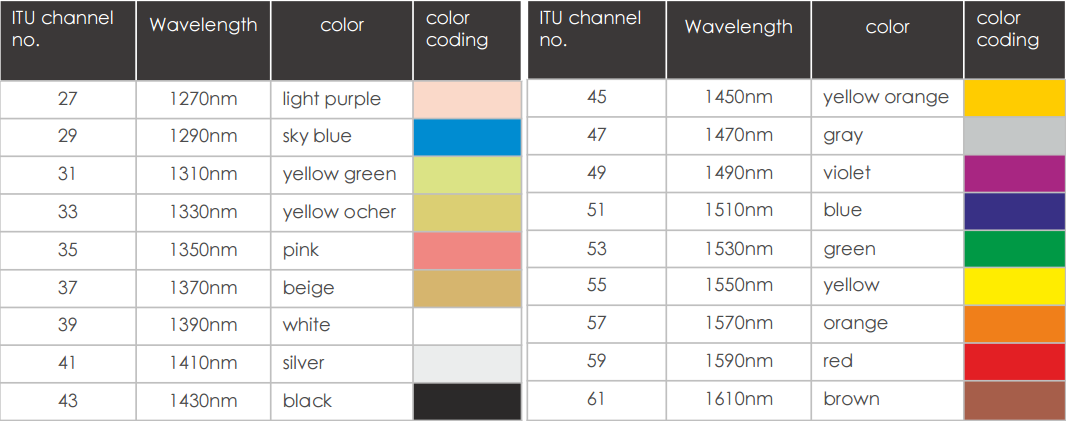
The WDM system uses a multiplexer at the transmitter to combine several wavelengths together, each one carry different signal with bite-rate up to 10G and a demultiplexer at the receiver to split them apart. Both mux and demux are passive, requiring no power supply. The 18 Channels CWDM mux demux covers all channels of 1270nm to 1610nm in 20nm increments. Without replacing any infrastructure, it totally support data rates up to 180 Gbps by being completely protocol transparent. The main fields of applications are the use in SDH (STM-1, STM-4, STM-16, STM- 64), IP (Fast Ethernet, Gigabit Ethernet, 10 Gigabit) ATM and storage (1G, 2G, 4G, 8G, 10G Fibre Channel) networks. Connectors, located on the front of the CWDM mux demux modules, are labeled and use the same color-coding that is used to indicate the wavelength of the individual CWDM SFP transceivers (shown in the figure below).
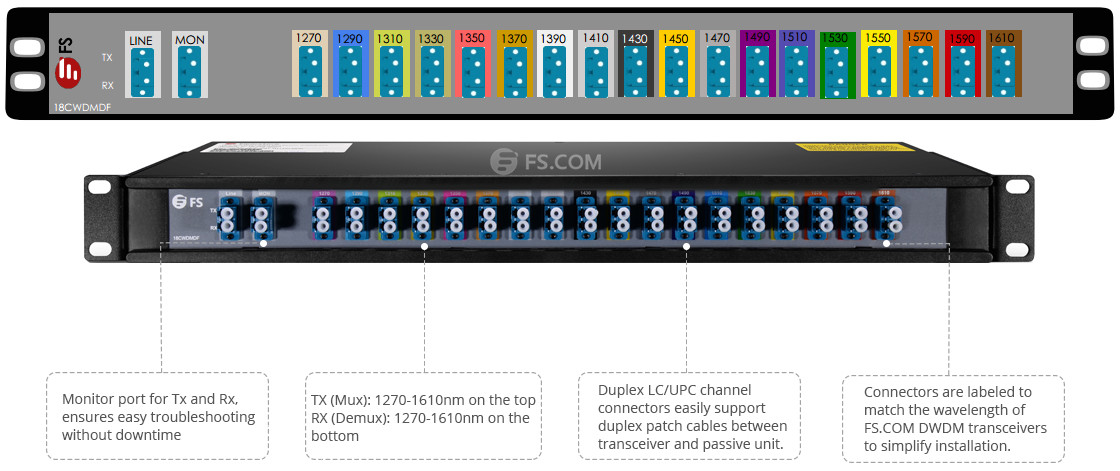
When fiber availability is limited, CWDM mux demux could increase the bandwidth on the existing fiber infrastructure. By using 18ch CWDM mux demux mentioned above and the CWDM SFP transceivers, up to 180 Gbps could be supported on a fiber pair.
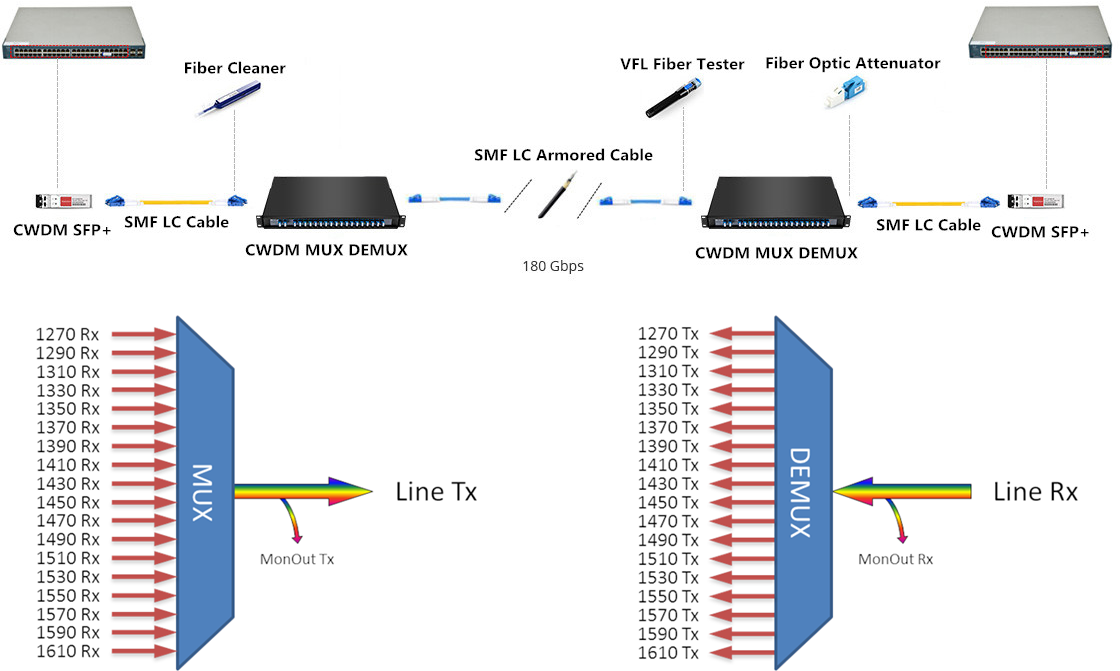
CWDM SFP transceiver is based on the SFP form factor which is a MSA standard build. The max speed of this product is 1.25G and they are also available as 2.5G and of course the popular CWDM 10G SFP transceivers. The CWDM SFP transceiver has a specific laser which emits a “color” defined in the CWDM ITU grid. The CWDM ITU grid is defined from 1270 to 1610nm and has steps of 20nm. So the available wavelength is 1270nm, 1290nm, 1310nm, 1330nm, 1350nm, 1370nm, 1390nm, 1410nm, 1430nm, 1450nm, 1470nm, 1490nm, 1510nm, 1530nm, 1550nm, 1570nm, 1590nm and C. Besides, our CWDM SFP transceivers are similarly color-coded as the CWDM mux demux to help you match the right link connection (shown in the figure below).
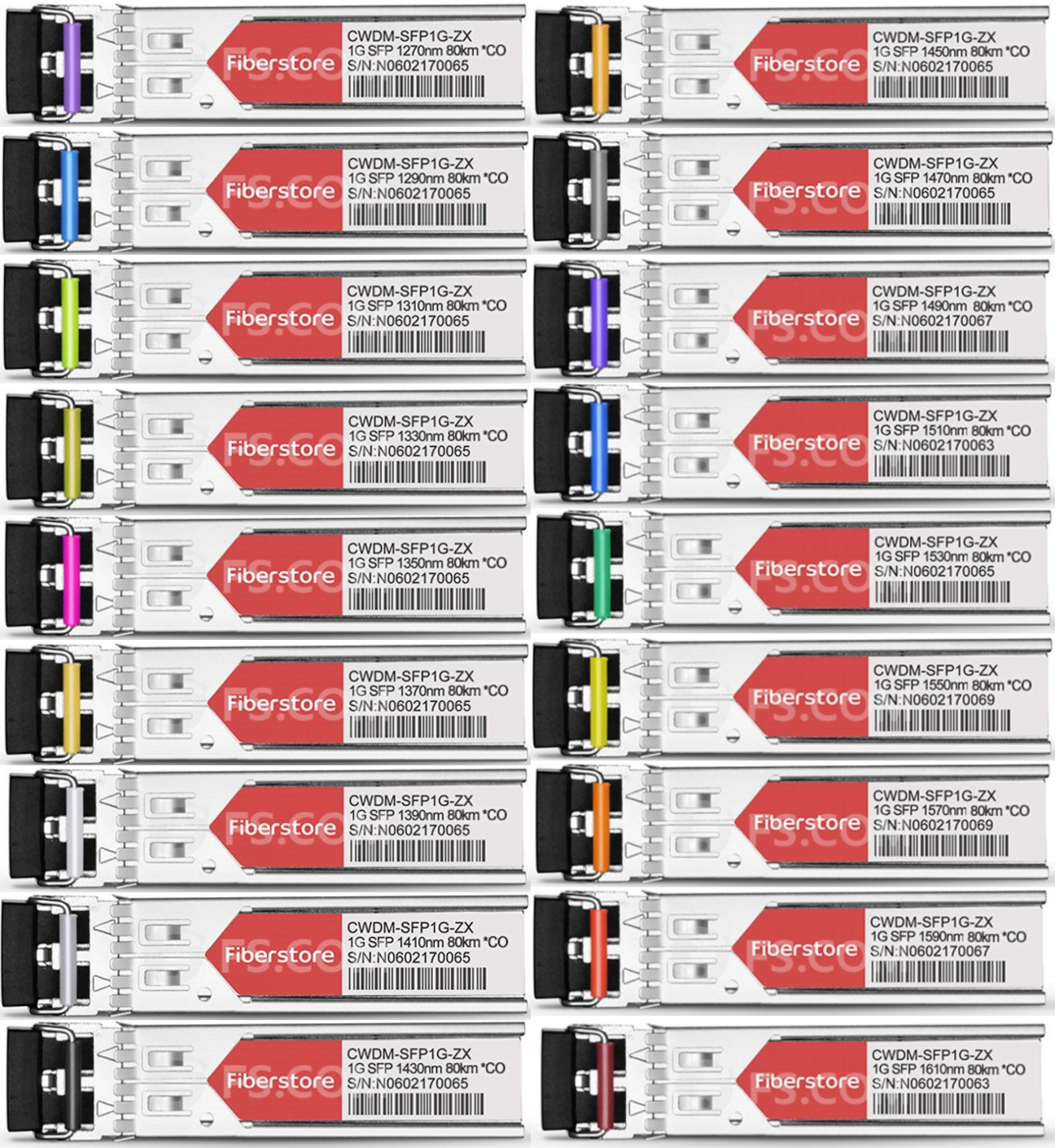
We can make the CWDM SFP transceivers compatible with every brand (Cisco, HP, H3C, Juniper, Huawei, Brocade, Arista). A lot of brands have vendor locking and only with the proper coding. Fiberstore is specialized in this rebranding or recoding. We have many different switches and routers in our test lab to test the coding. We also use different Optical Spectrum Analyzers to ensure the CWDM SFP transceiver is emitting the right color and has the correct power budget. The CWDM SFP transceiver is used in combination with passive CWDM mux demux, and we can provide you a complete solution and advice on which equipment fits best in your project. Please give us your project details and we will provide the most efficient and economical solution.
| 1270nm SFP | 1290nm SFP | 1310nm SFP | 1330nm SFP | 1350nm SFP | 1370nm SFP |
| 1390nm SFP | 1410nm SFP | 1430nm SFP | 1450nm SFP | 1470nm SFP | 1490nm SFP |
| 1510nm SFP | 1530nm SFP | 1550nm SFP | 1570nm SFP | 1590nm SFP | 1610nm SFP |

